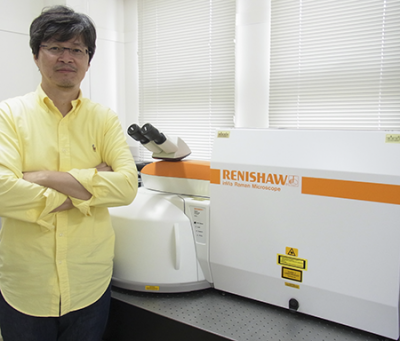
Crystallographic defects in 4H-SiC epitaxial wafers, such as dislocations and stacking faults, limit the commercialisation of SiC devices and must therefore be eliminated or reduced to levels lower than some critical density. The Department of Nanotechnology for Sustainable Energy in the School of Science and Technology at Kwansei Gakuin University’s research goal is to establish SiC crystal growth processes that can produce large, ultra-high quality SiC epitaxial wafers. To achieve this, they try to clarify the cause and formation mechanism of crystallographic defects in SiC bulk crystal and epitaxial film.
Crystallographic defects give rise to residual stresses in the crystals. The stresses can occur through a variety of mechanisms in 4H-SiC crystals. For example, temperature gradients in the grown crystals, which are a primary driving force for crystal growth, lead to plastic deformation of the crystals during the growth and/or cooling process. This deformation results in residual stresses when the crystals are cooled to room temperature. The spatial variation of stresses in the crystals can be measured using Renishaw’s inVia confocal Raman microscope. These measurements provide valuable information about the formation of defects during physical vapour transport (PVT) growth and chemical vapour deposition (CVD) processes. This information is used to improve the crystal growth process.
Professor Noboru Ohtani’s laboratory also uses high resolution X-ray diffraction (HRXRD) to characterise stress distribution. Raman microscopy provides complementary information to the HRXRD data but with much higher spatial resolution. Professor Ohtani and his colleagues recently published a paper in Materials Science Forum titled “Structural and electrical characterization of the initial stage of physical vapour transport growth of 4H-SiC crystals”. It illustrates the power of micro Raman imaging to help show the influence of heavily-doped nitrogen donors on the defect formation in SiC crystals.










